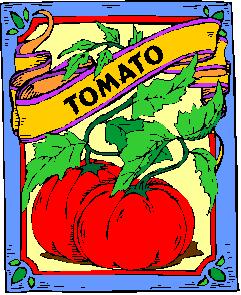 Intensive Gardening - March 17, 2010 Jeff Schalau, Associate Agent, Agriculture & Natural Resources University of Arizona Cooperative Extension, Yavapai County Intensive gardening seeks to maximize the vegetable harvest from a given space. In traditional vegetable gardens, long single rows are spaced far apart. This practice is convenient for working the garden, but wastes space. An intensive garden minimizes wasted space. Intensive gardening saves space and concentrates your work efforts to create an ideal plant environment, often giving better yields. Intensive gardening can also reduce weeds by occupying more growing space with crop plants. Intensive gardening practices include the use of raised beds, vertical space, interplanting, appropriate spacing, and planning/recordkeeping. Raised beds are often used in intensive gardening. In the uplands of the Verde Valley, raised beds may be the only option you have due to uneven ground and shallow soils. Raised beds make soil preparation easier and decrease the likelihood of soil compaction from foot traffic. If soil must be imported, I recommend using mineral topsoil rather than organic potting mixes. Make sure you have enough raised bed area to rotate crops. For example, tomatoes, eggplant, and peppers should not be grown in the same space year after year due to buildup of soilborne disease organisms. The garden plot should also be fenced with materials sturdy enough to exclude the local fauna. Adequate soil preparation is paramount to intensive gardening success. Close spacing makes plants more likely to compete for soil moisture and nutrients. Soil testing by a reputable lab is instructive when starting new gardens, but is not necessary after you become familiar with your garden and its performance. Soil preparation should include yearly inputs of composted organic matter (or green manure), as well as nutrients according to crop needs. The organic matter should be incorporated to a depth of 10-12 inches. Phosphorous is often lacking in native soils and should be strategically incorporated where roots will come into contact with it. Limestone derived soils are common in the Verde Valley and an addition of soil sulfur will temporarily acidify these alkaline soils. Nitrogen requirements vary by crop and growth stage of the plant. However, over fertilization with nitrogen can result in excessive vegetative growth and decreased fruit production. Trellises, nets, cages, strings, and/or poles should be used to support twining plants and better utilize vertical space. I cage my tomatoes, trellis my pole beans and cucumbers, and stake my eggplant and peppers. Keep in mind that using vertical space impacts the amount of light that reaches the ground. Plan accordingly by planting shade tolerant crops in these shadier areas. Shade tolerant crops include leafy vegetables and cruciferous crops like broccoli, kale, and cabbages. Growing two or more types of vegetables in the same place at the same time is known as interplanting. To successfully plan an interplanted garden you must take into account several factors for each plant: the length of its growth period, its growth pattern (tall, short, below or above ground), preferred season, and light, nutrient, and moisture requirements. You can accomplish interplanting by alternating rows within a bed (plant a row of peppers next to a row of onions), by mixing plants within a row, or by distributing various species throughout the bed. This is one of the most complicated aspects of intensive gardening. Planting flowers and herbs such as dill and fennel will also attract beneficial insects. Plant spacing requires knowledge of mature plant size. Seed packets often include spacing recommendations for rows. Intensive gardeners are less reliant on rows, but can use this spacing information for planting in “blocks”. Close spacing tends to create a nearly solid leaf canopy, acting as a living mulch, decreasing water loss, and keeping weed problems down. Successful vegetable gardening requires preplanning and record keeping. Pull out the maps and notes from last year’s garden when the seed catalogs arrive in the mail. If you have not kept notes in the past, then start. I use a sturdy composition notebook and write using a pen with waterproof ink. Sketch your garden plot drawing in the crops you want and how much of each you would like to grow. Your notes should include planting dates, crops and cultivars grown, and which grew and tasted best. The University of Arizona Cooperative Extension has publications and information on gardening and pest control. If you have other gardening questions, call the Master Gardener line in the Cottonwood office at 646-9113 ext. 14 or E-mail us at cottonwoodmg@yahoo.com and be sure to include your address and phone number. Find past Backyard Gardener columns or submit column ideas at the Backyard Gardener web site: http://cals.arizona.edu/yavapai/anr/hort/byg/. |